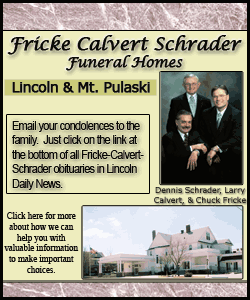|
 Yet the government's mine safety office didn't know of the bureau's concerns until after the accident, Kevin Stricklin, a coal mine safety administrator for the department, testified during a Senate hearing. Yet the government's mine safety office didn't know of the bureau's concerns until after the accident, Kevin Stricklin, a coal mine safety administrator for the department, testified during a Senate hearing.
The Labor Department oversees the mine safety office and approved the Crandall Canyon mining plan. The Bureau of Land Management, which oversees how much coal is mined from public land, is governed by the Interior Department, a separate agency.
"This is like the CIA not getting information from the FBI when we're getting attacked by terrorists," said Sen. Edward Kennedy, D-Mass., whose committee is investigating the oversight of the mine by the Labor Department's Mine Safety and Health Administration.
Six miners trapped during the Aug. 6 cave-in at the mine are presumed dead, entombed 1,500 feet below ground. Three rescuers were killed in a second collapse on Aug. 16.

About 30 of the victims' family members attended the Tuesday hearing by the Health, Education, Labor and Pensions Committee, sometimes wiping away tears or holding their heads in their hands. They declined to talk to reporters afterward.
Some of the family members are expected to testify at a House hearing on Wednesday.
Lawmakers have said they are skeptical that the government did everything it could to prevent the accident. They also have questioned why the Bureau of Land Management noticed the problems at Crandall Canyon
-- but not the mine safety department.
Documents released by the committee showed that in November 2004, a BLM inspector noted that pillars of coal, which were holding up the mine's roof, were failing.
The inspector, Stephen Falk, said that further mining by pulling out the pillars would be "untenable" and "wishful thinking" in hopes of extending the mine's life.
"Mining any of the coal in the pillars will result in hazardous mining conditions such as pillar bursts and roof falls," Falk wrote.
[to top of second column]
 |
 Under questioning, Stricklin said the report would have been helpful and could have shaped the agency's decision to allow mining at Crandall Canyon. Falk's report was done for internal use only, Kennedy's spokeswoman said.
Stricklin said that after the Crandall Canyon accident, he decided to review plans for all deep coal mines that use the same technique.
Both cave-ins at Crandall Canyon are believed to have been caused by a "bump," or spontaneous explosion from the mine roof, pillar or wall, caused by pressure from the heavy mountain above.
A bump in March caused the operators to abandon the northern section of the mine. The United Mine Workers union and others have said MSHA should have seen the cave-in as a warning and closed the mine. Instead, the agency approved a plan to allow mining in the mine's southern section.
Stricklin said Tuesday that his agency wasn't aware of the extent of the damage caused by the bump in March.
But Falk, the Bureau of Land Management inspector, saw the damage himself during a visit on March 15 and described extensive damage to the coal wall, which had cut off an important entryway. To continue mining in the northern section would have been unwise, he added.

Kennedy also presented Stricklin with another report, generated for the committee by the National Institute for Occupational Safety and Health, an agency under the U.S. Department of Health and Human Services.
NIOSH said the operators wanted to remove too much coal in the southern section, leaving a higher risk of a cave-in.
[Associated Press; by Jennifer
Talhelm]
Copyright 2007 The Associated Press. All rights reserved. This
material may not be published, broadcast, rewritten or
redistributed. |